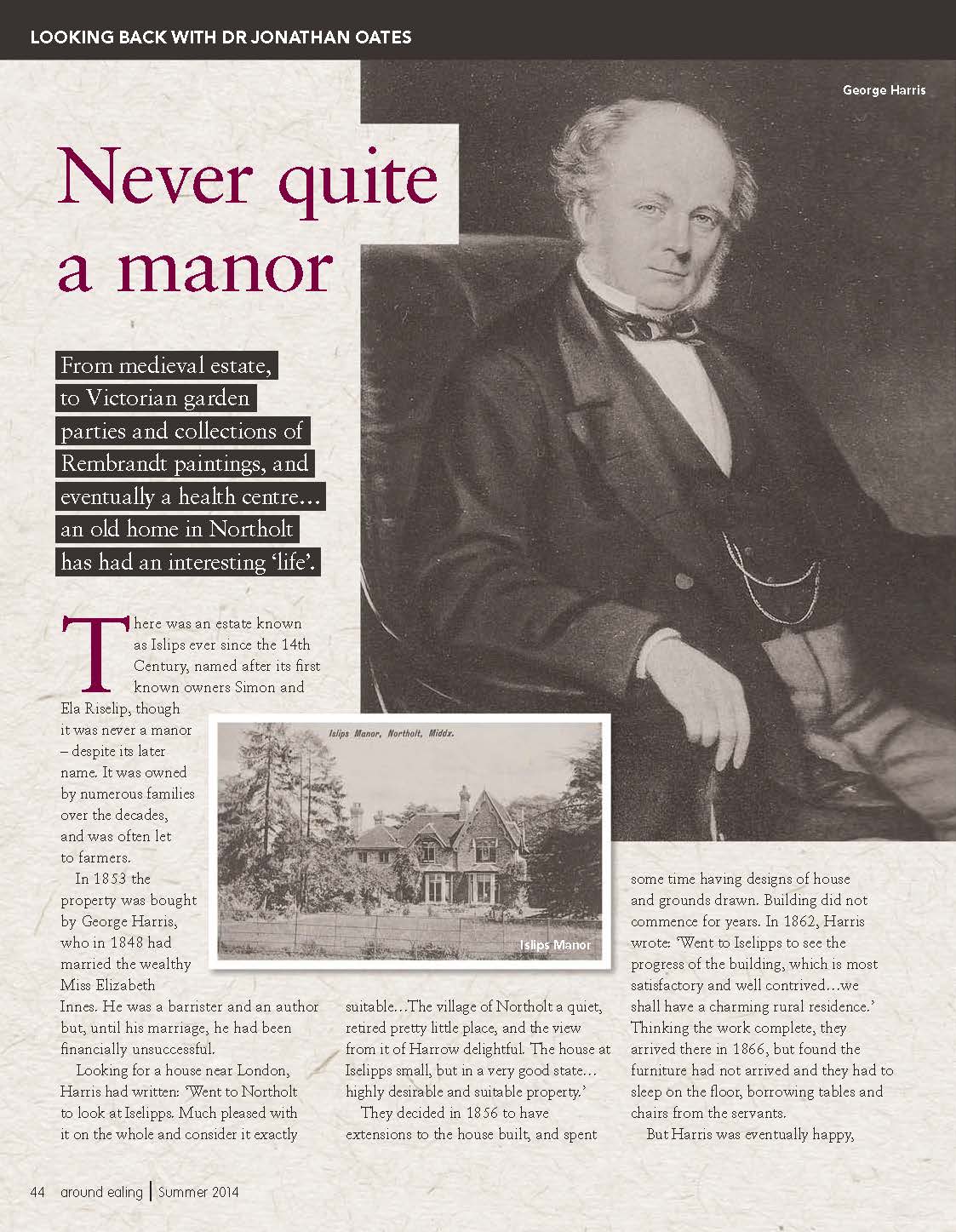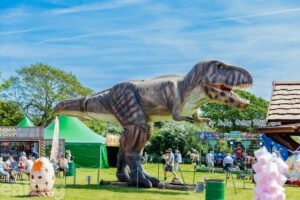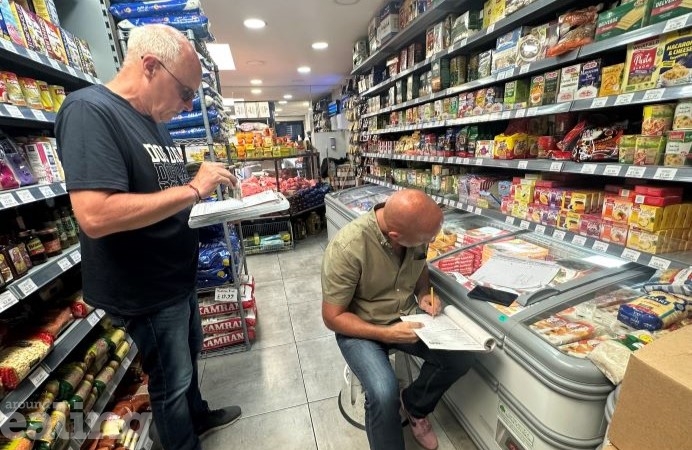From medieval estate, to Victorian garden parties and collections of Rembrandt paintings, and eventually a health centre…an old home in Northolt has had an interesting ‘life’.
There was an estate known as Islips ever since the 14th Century, named after its first known owners Simon and Ela Riselip, though it was never a manor – despite its later name. It was owned by numerous families over the decades, and was often let to farmers.
In 1853 the property was bought by George Harris, who in 1848 had married the wealthy Miss Elizabeth Innes. He was a barrister and an author but, until his marriage, he had been financially unsuccessful.
Looking for a house near London, Harris had written: ‘Went to Northolt to look at Iselipps. Much pleased with it on the whole and consider it exactly suitable…The village of Northolt a quiet, retired pretty little place, and the view from it of Harrow delightful. The house at Iselipps small, but in a very good state… highly desirable and suitable property.’
They decided in 1856 to have extensions to the house built, and spent some time having designs of house and grounds drawn. Building did not commence for years. In 1862, Harris wrote: ‘Went to Iselipps to see the progress of the building, which is most satisfactory and well contrived…we shall have a charming rural residence.’
Thinking the work complete, they arrived there in 1866, but found the furniture had not arrived and they had to sleep on the floor, borrowing tables and chairs from the servants.
But Harris was eventually happy, writing: ‘It is a great satisfaction to live in your own house, but more especially when the place is one of your own making, and has existed in your mind as regards its principal characteristics many years before it actually came into being.’
They held an annual garden party each summer. Harris enjoyed showing off his collection of Rembrandts and other illustrations and rare books to his visitors. In 1871 he wrote: ‘They seemed much pleased with my books and prints, and there was no lack of talking or of life.’
Being comfortably off, he was able to devote his time to his interests, which were chiefly historical and legal. His chief claim to fame was his unsuccessful attempt to establish the Historic Manuscripts Commission.
It was a small household; in 1881 the couple had only a cook and a housemaid living with them. His grandson remembered him as ‘a good raconteur, a bon-vivant and an excellent host’ and his wife was recalled as ‘a woman of strong character, held the purse strings tightly all her life.’
Harris died in 1890 and the property reverted to his wife’s family. It was let to various tenants over the subsequent decades, usually army offi cers and doctors.
In 1927 the house had two fl oors, six bedrooms, two bathrooms and three reception rooms. The grounds, of 12 acres, included a tennis lawn, an orchard, a paddock, ponds, a greenhouse and a kitchen garden. It was described as ‘placed well back from the road, with long carriage approach and lodge entrance.’
However, its days as a private house were numbered. In 1929 it was bought for £4,000 by Ealing Council. The house then became a health centre in a district with a growing population and the grounds became a park.
This originally appeared in Around Ealing summer 2014







